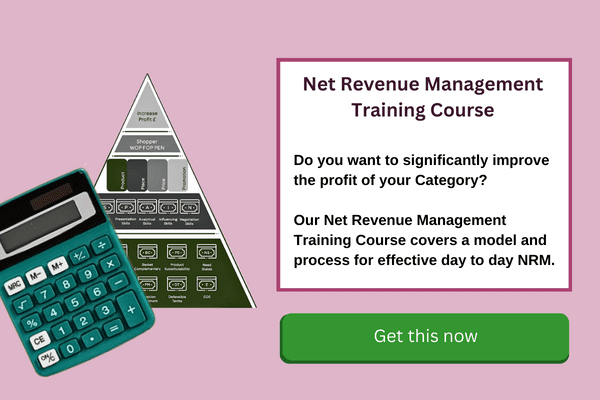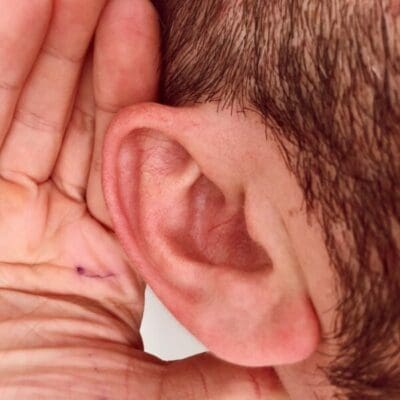Listening – Active, Attentive, Aware.
I’m going to begin this article on attentive listening with a phrase I read somewhere on the interwebs that made me really think.
‘Most people listen with the intent to respond, not with the intent to understand.’
This sentence really stuck with me. It’s not often I put down my phone whilst scrolling, sit and think about what it is I’ve just read or watched. This time, it did, however. Its woefully obvious once you read it and realise; ‘Oh, yeah… that makes sense’, but most of us would really have never arrived at this fact without some bright spark spelling it out on the internet for us all to see and stop in our tracks.
If you’ve read any other articles written by me (if not, there’s a good few on MBM’s award-winning blog page ;)) you’ll know that I’m a big fan of storytelling. So, let me paint you a little picture of a time and a person that really impacted my understanding of attentive listening, how to do it right and how it makes someone feel when you have done it right.

A Family Friend and a Young Boy
When I was in my early teenage (ish) years, 12-15 or so, I felt like I actually had something to say for once. Up until that point in your life, your parents sort of do the talking for you. At 11 years old there’s never much foresight or insight that you can spout at family gatherings. Once you’re a little older, though, you feel you’ve got a bit of something to contribute to the conversation.
This is a tough era of life because its the part where you want to be heard, you feel you should be heard, but no one has really caught onto that fact yet. All the ‘proper adults’ in your life still have the same perspective of you that they had when you were 10 or 11. It’s no one’s fault, it’s just the difference in perspectives at different age brackets. However, it can be really frustrating. My parents always made the effort to listen and to make sure I was heard in a crowd or group but it’s not quite the same when your folks doing the listening for other people.

A Real-Life Listener
In comes a marriage-relative of mine; Coleen. I was probably 14, hadn’t really met her or known her all too well but this time she was staying for a weekend with her husband, my Dad’s cousin, and my parents. At the time, I was big into art, painting, drawing etc. at that age. I sat with them, not saying much, in my living room and all of a sudden she asked me directly about my artwork. I was a little taken aback but pleasantly welcomed at the same time. She did that head tilt thing. You know, the way a person’s head curls to the side a little when they’re really listening to you. I felt so valued.
My parents would listen to me talk about painting all day long if I wanted to but someone else, someone new, someone who didn’t need to speak to me at all if they didn’t want to, was interested in my artwork. She asked questions and really strived to understand how it all worked.
It was probably a less-than-5-minute chat. In that 5 minutes, however, she changed my perspective and I listened intently to everything she had to say from that moment onward. I had gained a level of respect for someone that I didn’t naturally respect because of the blood relation of authority. A fantastic listener, Coleen.
Passive vs. Active Listening

That phrase; the intent to respond not understand, encapsulates the difference between these two types of listening.
Passive Listening
Passive listening is listening with the intent to respond. In these instances, you will probably already have a response ready and waiting before the other person finishes their sentence. If you catch yourself doing this, you’re listening passively. Also known as simply ‘hearing’ what the other person is saying and not really doing anything with that information apart from building a response based on half-processed, probably half-misunderstood information. As you can tell, this isn’t a very effective way of listening, or communicating, at all. It encompasses an exchange of inhales and exhales of breath, that’s about all it achieves.
Notice how, when making plans with someone, you tend to do this less. You are forced to actively listen in order to understand the dates and times you are required to be somewhere or do something. If you passively listen during these organisational exchanges, you’ll most likely have to re-confirm these details later. No one likes that text; ‘what time did you say for coffee tomorrow?’… like, were you even listening? What’s even worse is when someone re-confirms plans and then says they can’t make it, despite already having agreed to these plans.
This just highlights that they clearly weren’t even listening in the first place. If you make a habit out of doing this, just know that it makes people feel vastly undervalued. Actively engage in the plan-making conversation next time. For the sake of saving time, if nothing else.
Active Listening
Active listening is taking a moment. Pay (attention), pause, process, respond. This is the chain of acts that should be followed by both parties in an actively engaged conversation. Don’t build your response before they finish, listen to their entire statement. After this, take a moment to think and build an appropriate response. You’ll actually end up coming off twice as smart as before because you’re responding based on properly processed information. I know that I’d like to come across as smarter. Especially in professional conversations.
The 5 Steps to Becoming an Expert at Attentive Listening
1. The 3PR Model

Full warning, this ‘model’ is not based on any great research. The 3PR model is simply something that’s easy to remember to get you actively listening quick.
Pay, Pause, Process, Respond.
Three P’s, one R. Firstly, we pay attention. Actually, listen to what the other person has to say. Listen to understand, try and make sense of the whole message being communicated. Next, we pause. Once the person has finished talking, take a small moment to allow your brain to process what’s been said. Allow a shift in perspective, allow yourself to learn from this information, to form new ideas or opinions. That’s what takes place in these pausing moments. That pause is the filter between your brain and mouth. They don’t have to be awkward, either.
Say something like ‘you know, that’s a good point.’ Or repeat their question out loud. ‘What do you think about these pay cuts?’, ‘Hmm, what do I think about cutting pay? Well…’ By the time you’ve finished re-asking yourself the question, you will have processed and built a decent response. That’s the third ‘P’ ticked. Now, simply respond. Respond respectfully and address each point that’s been made with individual attention.
2. Recognise Body Language
People do not just speak with words. Actions, in fact, do speak much louder. So, in active engagement, you’re not just listening to the words, you’re open to their entire body.
Example 1: ‘I mean, I’m totally fine with these extra hours we have to work. I could use the extra money actually.’ Body language: relaxed, calm, shoulders back, arms uncrossed, chin elevated. This statement is actually true, this person is totally OK with working extra hours and they probably could do with the extra pay.
Example 2: ‘I mean, I’m totally, totally cool with these extra hours we’re being made to work. I could probably do with the extra money, actually, yeah… the extra money.’ From what this person’s said, we can already tell that they are not quite as sincere as the last version of the phrase. Body language: Arms crossed, lack of eye contact, deep breaths, feeling as if they’re convincing themselves rather than you. This statement is absolutely untrue. This person is really quite upset about the extra hours and is trying not to externalise her internal anger at the boss, the system, or the world.
Recognising the difference in body language here proves that actions do speak louder than words. If we hadn’t have analysed the body language in these statements, we most likely would have missed the drastic difference in emotion via the words alone.
3. Use Your Actions
Similarly to recognising the way someone talks and moves while they’re saying something, we can recognise body language in ourselves. Once we understand how we are coming across physically to someone, we can begin to utilise this understanding to communicate better.
If you’re happy and excited about something, try and push the animation in your movements. If you’re happy, look happy, act happy and you’ll make people happy. Another use for this is helping people to separate situations.
Let’s say you’re upset about something at home. An argument with your partner, financial stress, whatever it might be. You are sitting at your desk at work and suddenly you get an email that reads; ‘blah blah… we’d like to offer you a payrise…’. Everyone’s excited in the office and naturally wants you to join in and take part in the newfound positive office vibes for the rest of the day. You struggle because your argument with your husband is still fresh in the back of your mind. Use your body language.

There is a study that presented us with the knowledge that our brains cannot separate a smile from the serotonin released when we’re happy. So, you can force that serotonin to be released by simply forcing yourself to smile. It seems silly and awkward but its a tool I genuinely use on a daily basis. The same function of this can be projected externally. The office gang want to get you involved, project some positive body language out there and you’ll automatically feel happier. You’ll be recognised as happier, too.
4. Let. People. Finish.
There is honestly nothing more frustrating than the realisation that someone wasn’t actually listening to what you thought was a great point because they cut right over you and began their own. In my head, that says; ‘actually, don’t care, not important, my turn now.’. It’s not a fun feeling as I’m sure you have experienced. So… don’t bloody do it to other people. It’s rude and irritating and simply unnecessary. If you’ve chosen to have a conversation with someone, you’ve chosen to listen and respond to what they have to say.
When you are using the 3PR model, the interruption will never occur. Both parties will feel incredibly valued and the conversation as a whole will be more beneficial. The better both parties listen, the more they can evolve the exchange into an intelligent discussion. Passing conversations can become something to really learn from once both parties are practising attentive listening to one another.
5. Stop Asking for the Sake of it.
I’m ending this tip chain on the simplest tip of all. Just be interested in the first place. There’s nothing you are less likely to actively listen to than a spew of anecdotes and points about a subject you are not even remotely interested in. If you have the choice to avoid a conversation that, for you, will be boring, then do. Its always going to be better to simply not have the conversation than to make someone feel undervalued by asking and then coming across as if you don’t really care.

The thing is, that’s not something we can really control. Its very, very difficult to make it look like you are really invested when actually you would rather pop off for lunch and never hear about the nuances of different film genres ever again. Ultimately, just bring the conversation to an end before you start to become really bored.
Of course, there is many a situation in which this is impossible. It’s rude, or it’s someone you’ve got to listen to, or its information you need to know. In this case, actively listening as much as you can will make you a little more interested. Try and process the information and form new ideas or opinions with it. This will keep you more interested, less bored-looking and ultimately better at listening.
Final Words on Attentive Listening
Attentive listening helps you speak. The better you are at attentive listening, the more valued and respected the other person will feel. As a result, they will naturally want to devote more focus and attention to understanding your points, and responses to their points. They will try harder to provide cohesive responses to things you’ve said. You’ll both feel valued, you’ll learn and you’ll never be interrupted again.




